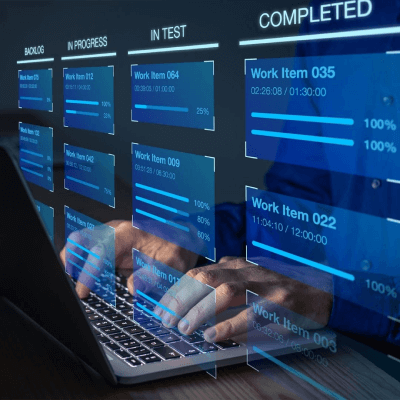How coronavirus set the stage for a techno future with robots and AI
coronavirus set the stage for a techno future with robots and AI. Not so long ago, the concept of a fully automated store seemed something of a curiosity. Now, in the midst of the COVID-19 pandemic, the idea of relying on computers and robotics, and checking out groceries by simply picking them off the shelf doesn’t seem so peculiar after all.
Part of my research involves looking at how we deal with complex artificial intelligence (AI) systems that can learn and make decisions without any human involvement, and how these types of AI technologies challenge our current understanding of law and its application.

Important Announcement – EasyShiksha has now started Online Internship Program “Ab India Sikhega Ghar Se”

How should we govern these systems that are sometimes called disruptive, and at other times labelled transformative? I am particularly interested in whether — and how — AI technologies amplify the social injustice that exists in society. For example, unregulated facial recognition in the United States affects almost 120 million adults, with no independent testing for biased error rates; this effectively creates a virtual, perpetual line-up for law enforcement.
Current applications
Connected supermarkets, like Amazon Go Grocery, use technology that employs computer vision, sensor fusion and deep learning to eliminate the need for staffed checkouts. These are are the same types of technologies used in self-driving cars. Connected supermarkets have eradicated standing in line ups and the traditional checkout experience, as well as the more recent self-checkout experience.
Top Courses in Software Engineering
Other curious innovations used to seem other-worldly, such as autonomous robot cleaners that use ultraviolet light to disinfect hospitals and medical facilities.
Some products raise concerns, like ZoraBot, an elder-care robot. These robots are designed to increase independence and reduce loneliness within the world’s growing elderly population. But there are concerns that the robots are potentially insufficient in terms of proper human companionship.
Technological workforces
Prior to the COVID-19 outbreak, we worried that increased automation would impact our workforce, making us uneasy about losing our jobs to machines. We worried about replacing essential workers such as cleaners with autonomous floor-cleaning robots. We fearfully predicted job loss and out-of-balance allocation of prosperity. A 2017 McKinsey report on the future of labour predicted that between 400 and 800 million people around the world could be displaced by automation by 2030.
Empower your team. Lead the industry
Get a subscription to a library of online courses and digital learning tools for your organization with EasyShiksha
Request NowQ. Are EasyShiksha's internships truly free?
Yes, all internships offered by EasyShiksha are completely free of charge.
Q. How can I apply for an internship with EasyShiksha?
You can apply by visiting our website, browsing available internships, and following the application instructions provided.
Q. What types of internships are available through EasyShiksha?
EasyShiksha offers a wide range of internships across technology, business, marketing, healthcare, and more. Opportunities are continuously updated.
Q. Will I receive a certificate upon completing an internship?
Yes, upon successful completion, you will receive a certificate recognizing your participation and achievements.
Q. Are EasyShiksha's internship certificates recognized by universities and employers?
Yes, the certificates are recognized by universities, colleges, and employers worldwide.
Q. Is the download of certificates free or paid?
Access to internships and courses is free, but there is a small fee to download certificates, covering administrative costs.
Q. When can I start the course?
You can choose any course and start immediately without delay.
Q. What are the course and session timings?
These are fully online courses. You can learn at any time and pace. We recommend following a routine, but it depends on your schedule.
Q. What will happen when my course is over?
After completion, you will have lifetime access to the course for future reference.
Q. Can I download the notes and study material?
Yes, you can access and download course materials and have lifetime access for future reference.
Q. What software/tools would be needed for the course?
All necessary software/tools will be shared during the training as needed.
Q. I’m unable to make a payment. What should I do?
Try using a different card or account. If the problem persists, email us at info@easyshiksha.com.
Q. Do I get the certificate in hard copy?
No, only a soft copy is provided, which can be downloaded and printed if required.
Q. The payment got deducted but shows “failed”. What to do?
Technical errors may cause this. The deducted amount will be returned to your account in 7-10 working days.
Q. Payment was successful but dashboard shows ‘Buy Now’?
Sometimes payment reflection is delayed. If it takes longer than 30 minutes, email info@easyshiksha.com with the payment screenshot.
Q. What is the refund policy?
If you face technical issues, you can request a refund. No refunds are issued once the certificate has been generated.
Q. Can I enroll in a single course?
Yes, select the course of interest, fill in the details, make payment, and start learning. You will also earn a certificate.
Q. My questions are not listed above. I need further help.
Contact us at info@easyshiksha.com for further assistance.
There is mounting evidence that technology, in fact, protects humans. The bots, after all, can’t get COVID-19. coronavirus set the stage for a techno future with robots and AI. To learn more visit HawksCode and Easyshiksha.
ALSO READ: responding-to-humanitarian-needs-in-a-pandemic-situation
Get Course: Linux-for-Absolute-Beginner



































































